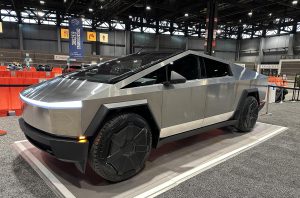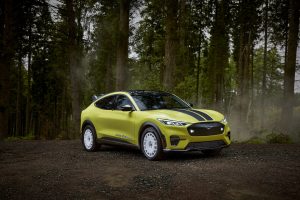It’s become something of conventional wisdom that the EV market is slowing down. And there’s no question that, on a percentage basis, the growth rate for battery-electric vehicles has slowed over the last 12 months. But the market does continue to grow, Kia’s EV sales jumping 151% in March. Ironically, it was the 800-pound gorilla of the battery-electric market, Tesla, where sales fell well short of expectations.
Despite fears steep interest rates coupled with high prices could crimp the delivery of new vehicles this year, sales in the first quarter of 2024 outpaced expectations. There were a few exceptions – and an occasional surprise. Tesla fell well short of its already weak forecast, for one thing. On the other hand, overall demand for hybrids and all-electric vehicles was more substantial than many had anticipated.
That helped the industry deliver March US light vehicle sales a solid 4.6% over year-earlier numbers. On a seasonally adjusted annualized rate, or SAAR, that worked out to 15.5 million units, according to analysts at Bank of America.
Beating expectations
“This was above our mid-month estimate of 15.4mm, but below the Bloomberg consensus of 15.9 million units. The 2024 year-to-date SAAR now sits at 15.4million units,” Bank of America analysts noted.
While most automakers reported March sales on Tuesday, Ford Motor Co. waited a day. When it did it revealed a 6.8% increase for the first three months of 2024, bolstering the upward trend already seen in healthy gains at Toyota, Honda, Nissan, Subaru and Volkswagen of America. VW had one of the biggest increases for the month, at 21%.
Ford has been struggling to maintain last year’s strong momentum in the “electrified” vehicle market, just this week announcing another cutback at the Dearborn, Michigan plant building its F-150 Lightning pickup.
For the first quarter, however, Ford’s EV sales of EV’s climbed by 86% in the first quarter thanks to increased sales of the F-150 Lightning, which jumped 80.4% even as the company scaled back production at an EV truck plant in Dearborn, Michigan. Sales of the Ford Mach E increased by 78 % and the E-Transit, which Ford markets to commercial customers grew by 86 %, making Ford the second leading seller of EVs in the U.S. behind Tesla.
The growing popularity of hybrid trucks and SUVs helped Ford set a hybrid sales record as sales jumped 42% to 38,421. The Ford Maverick was America’s No. 1 selling hybrid truck in first quarter. Maverick Hybrid sales were up 77 percent over a year ago on sales of 19,660.
Tesla unplugged

Tesla fell sharply below expectations during the first quarter, even with the launch of the Cybertruck shown here at the Chicago Auto Show.
Unlike other manufacturers, Tesla reports deliveries, rather than sales. Either way, the numbers were disappointing, triggering a sharp drop in its already weakened stock price. The EV maker produced 433,371 vehicles and delivered 386,810 vehicles during the first quarter. As Headlight.News reported Tuesday, analysts had predicted delivery totals ranging from 449,080 to 454,200 vehicles.
The reasons behind the shortfall are varied, including increased competition in the key market of China. There are also indications that potential buyers – who politically tend to lean left – may be turning against the company and its CEO Elon Musk who has increasingly taken a hard right turn, amplified by X, the former Twitter social media service he took over in October 2022.
There were expectations the first-quarter would be weak, but it turned into an unmitigated disaster,” said Wedbush analyst Dan Ives. “We view this as a seminal moment in the Tesla story for Musk to either turn this around and reverse the black eye 1Q performance. Otherwise, some darker days could clearly be ahead that could disrupt the long-term Tesla narrative.”
While Tesla was arguably the biggest disappointment for industry-watchers, Stellantis was one of the few other automakers that might have wanted a do-over in March, sales dropping by double digits. But even here, there was good news in terms of electrification. Stellantis’ total PHEV sales increased 82% year over year.
More Auto News
- March Auto Sales Are Strong – But Affordability Remains an Issue
- Tesla Q1 an “Unmitigated Disaster”
- Nissan, Mitsubishi Finally Taking Advantage of Their Alliance
Risks persist
“We forecast US auto sales of 16.1million units (for all of) 2024, although some risks persist, including: macro uncertainty, inflation, elevated rates, consumer confidence, and a potential US recession,” Bank of America analysts noted. “After growth in 2023 of 12.5%, we expect a further uptick in 2024 US auto sales to 16.1 million units, ultimately building to a cyclical peak in 2028 17-18 million units.
“This should be driven by pent-up demand, fleet, and a return of mass market sales,” noted the Bank of America report, which said Detroit’s three automakers sales performance lagged behind that of European and Japanese rivals in the first quarter. Detroit’s carmakers suffered as sales of full-size pickup trucks declined ahead of upcoming model changes. Ford F-150 sales dropped 10% and Stellantis’ Ram brand’s sales dropped by 15%.
Betting big on big trucks
“The new F-150 will be a big play for us across gas, hybrid and electric vehicle segments of our business,” said Andrew Frick, president, Ford Blue. “With the new F-150 and all-new Ranger sales beginning in March along with the strong performance of our all-new Lincoln Nautilus and Nautilus Hybrid, we’re in a strong position to capitalize and grow as we move through 2024. From gas engines to hybrids to electric vehicles, we offer our customers more choices,” noted Frick.
As for, Stellantis said it was in the midst of a model year changeover at its key truck plant in Sterling Heights, Michigan. It is looking to the updated Ram to help the truck brand recover ground lost to truck rivals GM, Ford and even Toyota.
Like GM and Ford, Stellantis also is getting into the EV market over the coming year with the launch of two all-electric Jeeps and a battery-powered version of its Ram 1500, the REV.
“2024 will be a transformative year for the company and our consumers,” said Jason Stoicevich, head of U.S. sales.







0 Comments